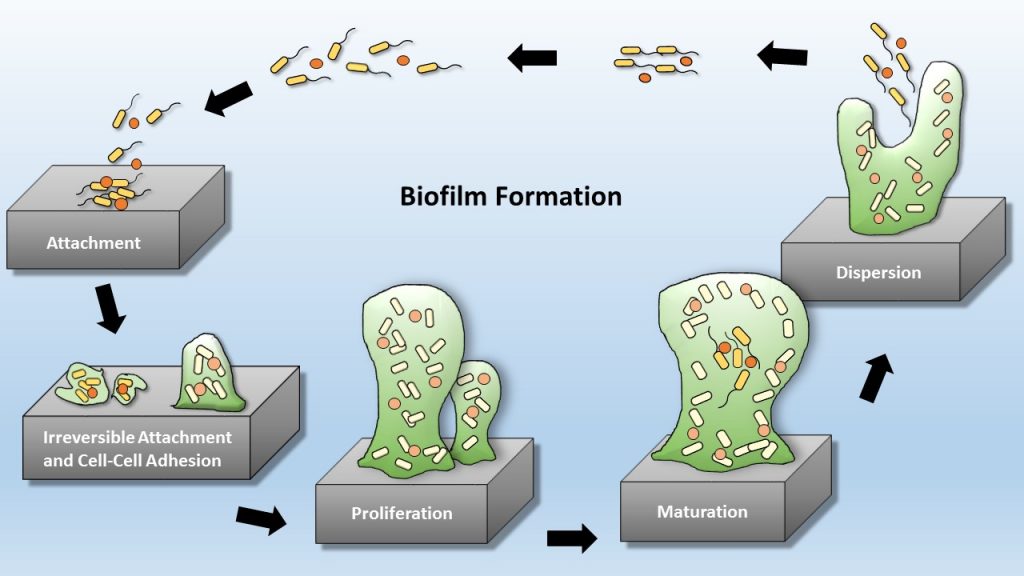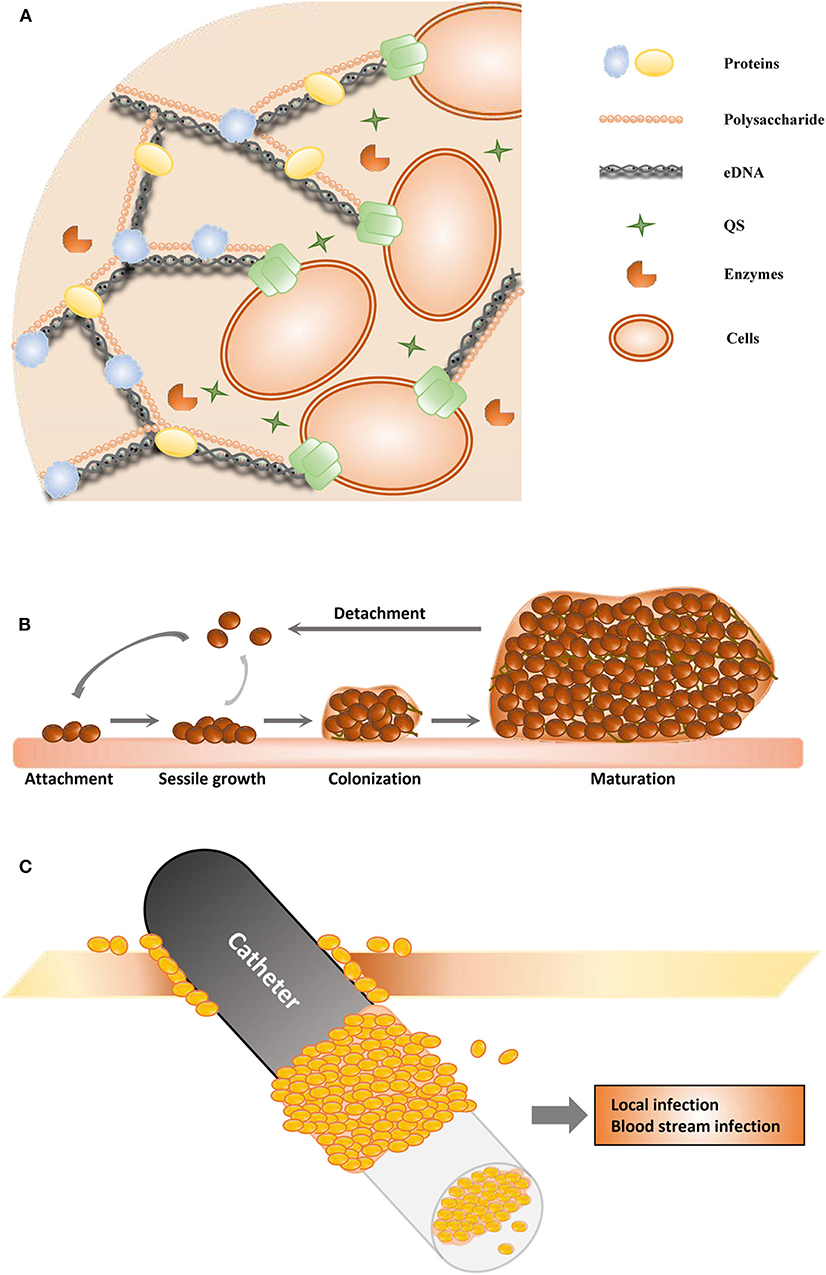Which Structure Is Most Closely Associated With Biofilm Formation

Imagine a still pond, shimmering under the afternoon sun. A thin, barely visible film coats the submerged rocks and reeds. This isn't just algae; it's a complex, thriving community – a biofilm, a testament to the remarkable adaptability of microorganisms.
At the heart of biofilm formation lies a critical structure: the extracellular polymeric substance (EPS) matrix. This intricate scaffold, secreted by the resident microorganisms, provides the essential framework for biofilm development, function, and resilience.
Understanding Biofilms: A Microbial Metropolis
Biofilms are far from simple, static layers. They are dynamic, three-dimensional structures composed of diverse microbial species embedded within a self-produced matrix of EPS. Think of it as a bustling microbial city, complete with infrastructure, communication networks, and defenses.
Biofilms are ubiquitous, found in diverse environments ranging from industrial water pipes and medical implants to our own teeth and digestive systems. Their impact is profound, influencing everything from environmental processes to human health.
The Significance of EPS in Biofilm Architecture
The EPS matrix is the defining characteristic of a biofilm, distinguishing it from planktonic (free-floating) microbial communities. It’s a complex mixture of polysaccharides, proteins, nucleic acids, and lipids, secreted by the microorganisms within the biofilm.
This matrix provides structural support, enabling the formation of the three-dimensional architecture characteristic of biofilms. It acts as a glue, holding the microbial cells together and anchoring the biofilm to a surface.
The Multifaceted Roles of the EPS Matrix
Beyond structural support, the EPS plays several crucial roles in biofilm survival. It acts as a protective barrier against environmental stressors, such as antibiotics, disinfectants, and the host's immune system.
The EPS can also serve as a nutrient reservoir, trapping and concentrating essential compounds for the biofilm inhabitants. This allows them to thrive even in nutrient-limited environments.
Furthermore, the EPS facilitates cell-to-cell communication within the biofilm. It provides a medium for the transport of signaling molecules, enabling coordinated behavior and gene expression.
Delving Deeper: The Composition of EPS
The composition of the EPS matrix varies depending on the microbial species present and the environmental conditions. However, some common components are consistently found in most biofilms.
Polysaccharides are often the dominant component, providing the structural backbone of the matrix. These complex sugars can be highly diverse, influencing the physical properties of the biofilm.
Proteins play a variety of roles, including adhesion, enzymatic activity, and structural support. Some proteins are involved in the initial attachment of cells to a surface, while others contribute to the overall architecture of the biofilm.
Nucleic acids, such as DNA, can contribute to the structural integrity of the EPS and may also play a role in horizontal gene transfer within the biofilm. Lipids can contribute to the hydrophobic properties of the biofilm, affecting its interaction with the surrounding environment.
The Implications of EPS in Various Fields
Understanding the role of EPS is crucial in addressing biofilm-related challenges in various fields. In medicine, biofilms are a major cause of chronic infections, often resistant to antibiotic treatment.
Targeting the EPS matrix is a promising strategy for developing new antimicrobial agents. By disrupting the structure and function of the EPS, researchers hope to render biofilms more susceptible to conventional antibiotics.
In industrial settings, biofilms can cause biofouling, leading to reduced efficiency and increased maintenance costs. Developing strategies to prevent biofilm formation on surfaces is essential for optimizing industrial processes.
In environmental science, biofilms play a critical role in bioremediation, the use of microorganisms to remove pollutants from the environment. Understanding the EPS matrix is essential for optimizing the performance of bioremediation systems.
Research and Future Directions
Ongoing research is focused on unraveling the complexities of the EPS matrix. Scientists are investigating the specific roles of different EPS components and exploring new ways to target the EPS to combat biofilms.
Advances in imaging techniques, such as confocal microscopy, are providing unprecedented insights into the structure and dynamics of biofilms. This is enabling researchers to study the EPS matrix in its native environment.
New materials and coatings are being developed to prevent biofilm formation on surfaces. These materials are designed to disrupt the initial attachment of cells, preventing the formation of a stable biofilm.
Conclusion: A Microscopic World with Macroscopic Impact
The EPS matrix is undeniably the key structural element associated with biofilm formation. It is the foundation upon which these complex microbial communities are built and the shield that protects them from external threats.
Recognizing the pivotal role of the EPS allows us to better understand and address the challenges posed by biofilms in medicine, industry, and the environment. As we continue to unravel the mysteries of this remarkable microbial structure, we pave the way for innovative solutions and a greater appreciation for the intricate world of microorganisms that surrounds us.
The study of biofilms and their EPS matrix is a constant reminder that even the smallest structures can have the most profound impact. And the more we learn, the better equipped we are to navigate the complexities of the microbial world and harness its potential for the benefit of all.




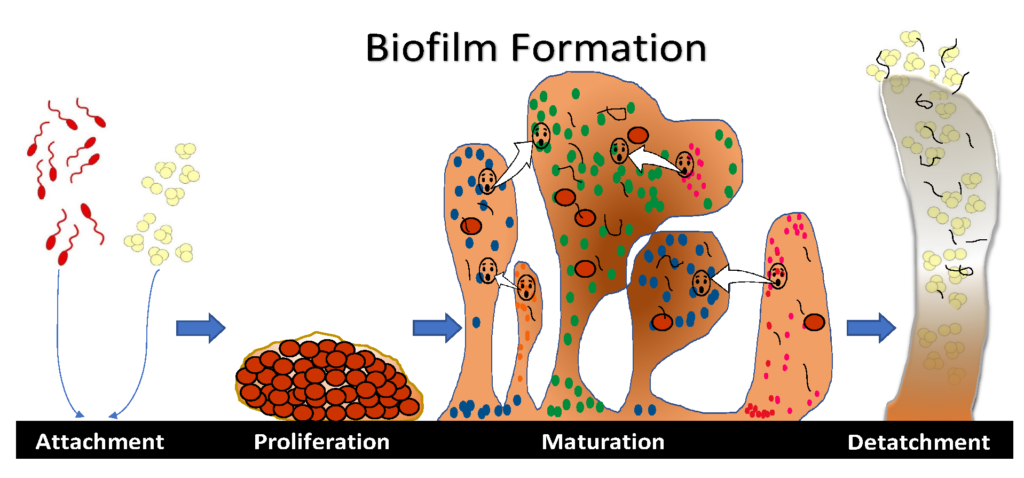
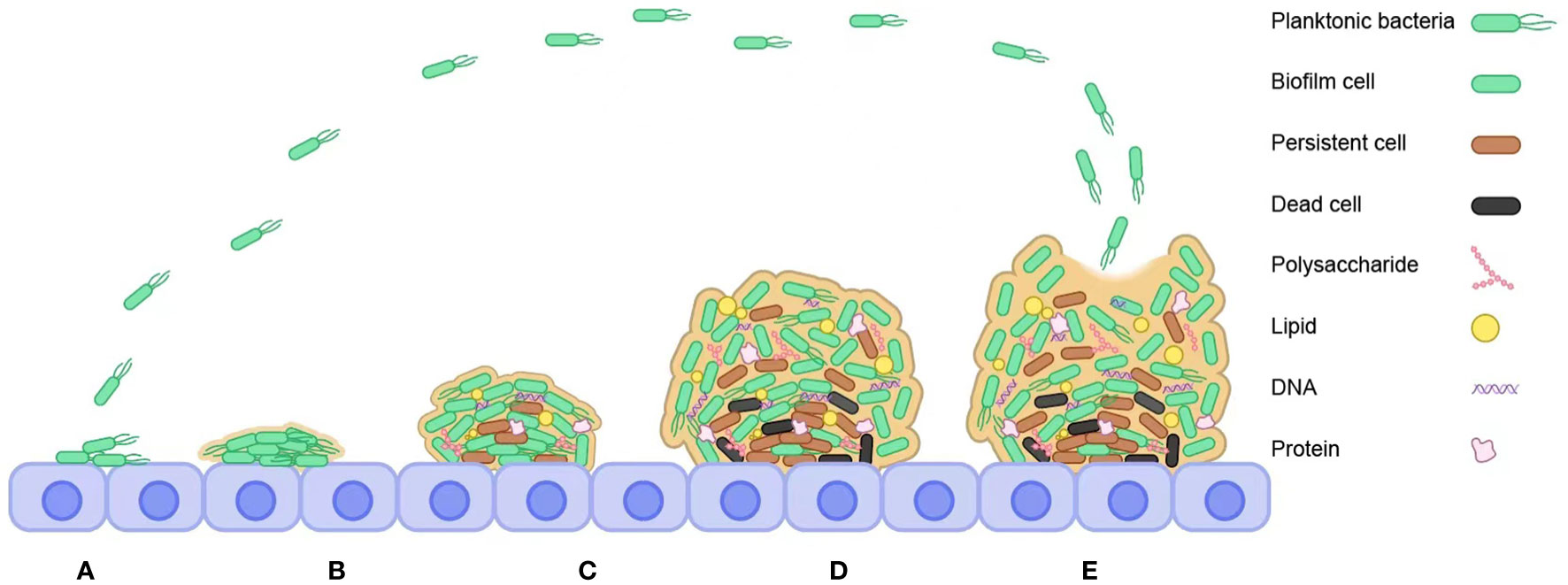



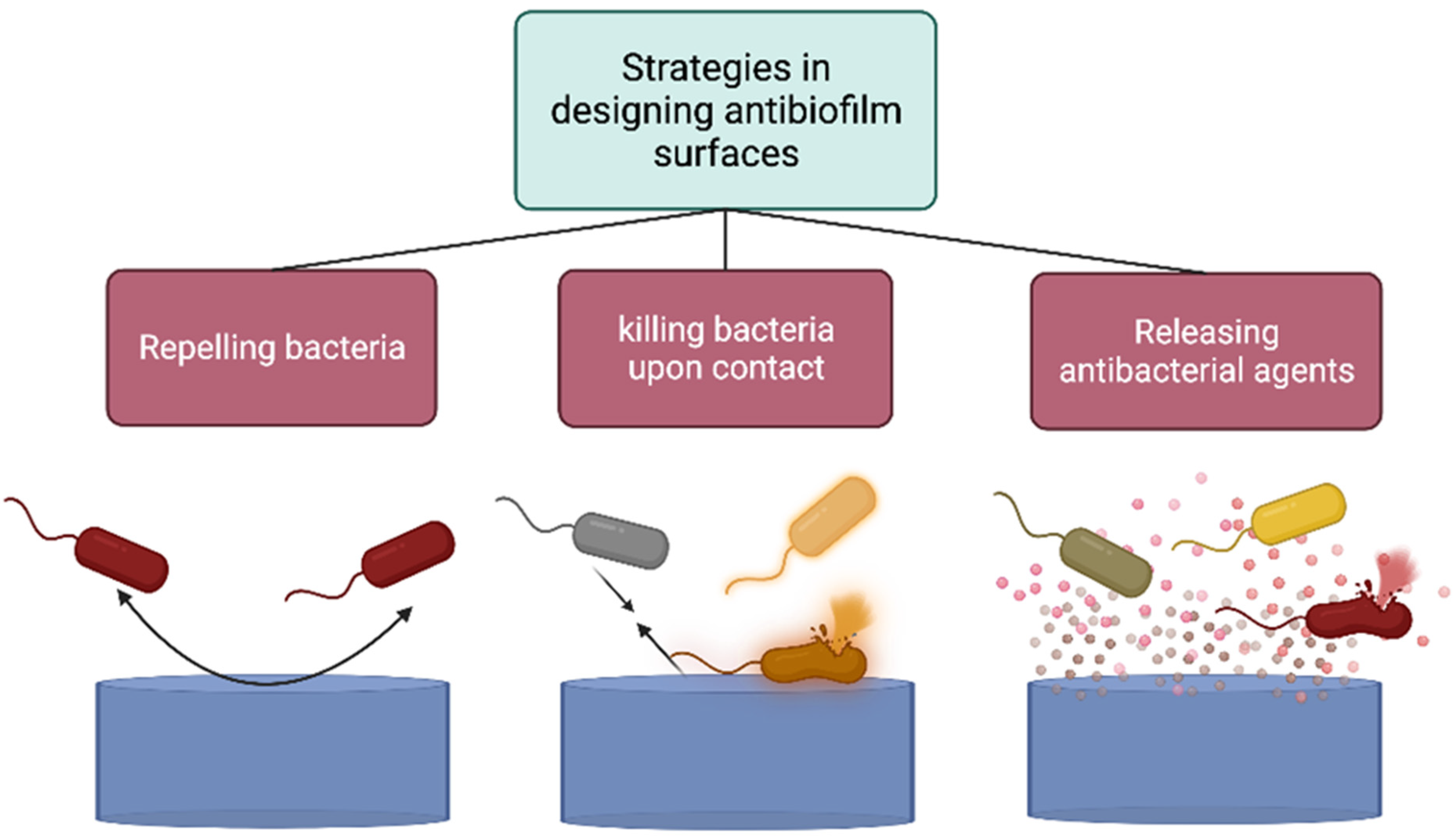

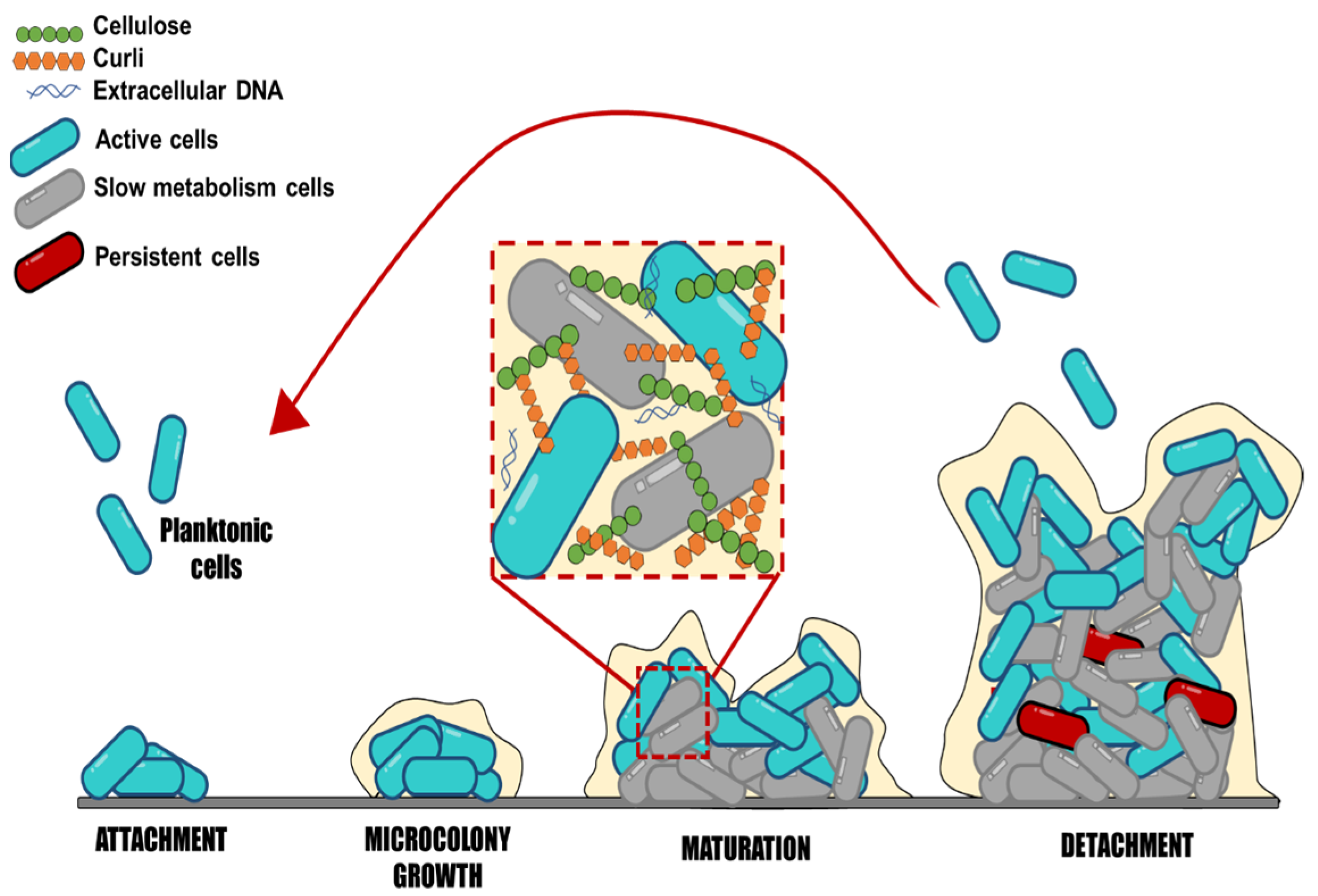
![Which Structure Is Most Closely Associated With Biofilm Formation Schematic drawing of biofilm formation (adapted from [6,7]). | Download](https://www.researchgate.net/publication/303509835/figure/fig1/AS:614036299333659@1523409070792/Schematic-drawing-of-biofilm-formation-adapted-from-6-7.png)



